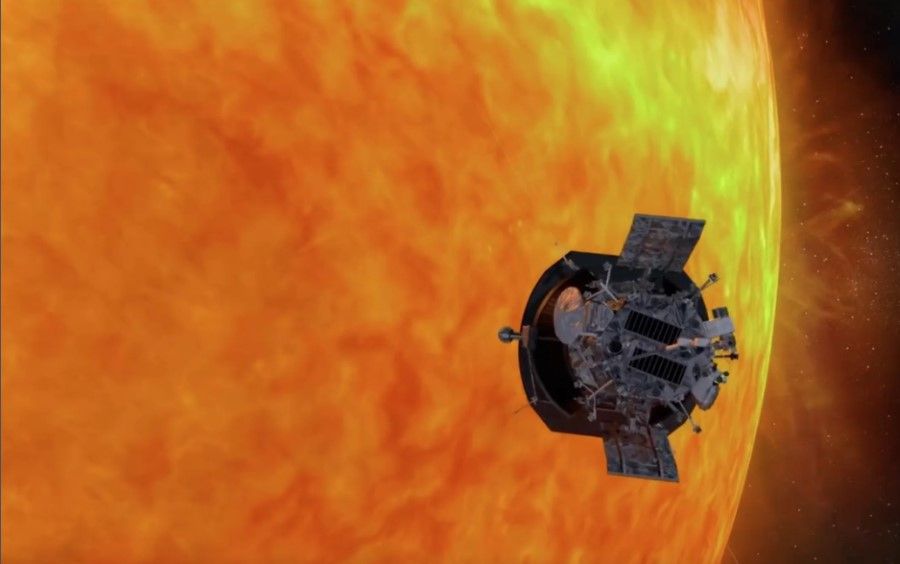Parker Solar Probe survives first close encounter with the Sun
The Parker Solar Probe has survived its first close approach to the sun, NASA reported. The spacecraft came within 24 million kilometers of our star – much closer than any other man-made space vehicle. The probe has sent back information to Earth that all equipment is functioning properly and continues to collect scientific data.
Probe Parker Solar Probe set two records this week. During its first flyby, the wok In 1976 it reached a record distance of only 24 million kilometers from the Sun in kilometers . The previous record was set by Helios 2 in 1976.
Second of a record into this speed record. On Monday, 5 November, while passing through the perihelion of its present orbit, the spacecraft reached a velocity of more than 340 thousand kilometers per hour relative to the Sun. It is the fastest man-made spacecraft to date. The previous record belonged to r Also to the German-American probe Helios 2, which In 1976, it reached 246,000 kilometers from the Sun per hour.
But during its mission, Parker Solar Probe will repeatedly break speed records and for closest approach to the Sun. Over its seven-year mission, the probe is scheduled to complete 23 more orbits around l of our star. NASA experts estimate that by the end of the mission, the spacecraft will have a velocity of about 700,000 kilometers per hour. During the closest approach, it will come within just six million in one kilometer in from the Sun – This is close enough to study the star’s mysterious atmosphere, the solar wind and other features.
Such close proximity to our star will expose the probe to extreme temperatures and solar radiation. Spacecraft will face temperatures as high as 1,400 degrees Fahrenheit. Celsius – is about what it takes to melt steel. But Parker Solar Probe is specifically designed for this purpose.
Thermal Protection System protects instruments and sensors inside the probe from the infernal heat. During the first flight, the temperature did not exceed 450 degrees Celsius. Celsius. This is not much in the cf in relation to what awaits the space vehicle. The fireproof shield is made of an 11.5 centimeter layer of composite in carbon. It will enable the probe to complete its mission. The vehicle also has a special cooling system that provides sensors with a temperature at which the cruise will be able to work.
– Parker Solar Probe was designed to take care of itself and its j precious cargo during this close approach, without any control from Earth, and now we know it was successful. The probe is the culmination of six decades of scientific progress. We have now realized humanity’s first close visit to our star. The visit will have implications not only here on Earth, but also for a deeper understanding of our Universe – said Thomas Zurbuchen of NASA headquarters in Washington.
Mission controllers received a signal from the probe showing the status „A”, which means that all of the probe’s instruments are functioning and collecting scientific data. Even if there were some minor problems, they were solved autonomously by the spacecraft.
Currently, due to the strong solar radiation, the probe has limited communication with Earth. It sent only kr tki signal to control flight on the state of their components . The first of 24 scheduled flybys ok The solar flare began on October 31 and will continue until November 11. Only after its completion will the first scientific data flow to Earth.
The Parker Solar Probe launched this August 11 from Cape Canaveral aboard a ULA Delta IV Heavy rocket. It is to study the outer layers of the Sun’s atmosphere. Scientists hope to better understand the physical phenomena occurring in wok ³ stars. They also want to explain the heating mechanisms of the solar corona, which The spacecraft has a temperature of more than two degrees Celsius ch million in st. Celsius, while the surface of the star is less than six thousand st. Celsius.
Researchers want to r and also to find out the details The details of the solar wind – of a plasma stream made up of protons , electron and alpha particles. Scientists do not know how solar wind ions are accelerated. With this knowledge, it will be possible to more accurately predict the sun’s activity, and thus better predict „space weather”, kt ra has an impact on the smooth operation of the satellites hether flight safety in space, and in drastic cases could be fatal to our civilization.
